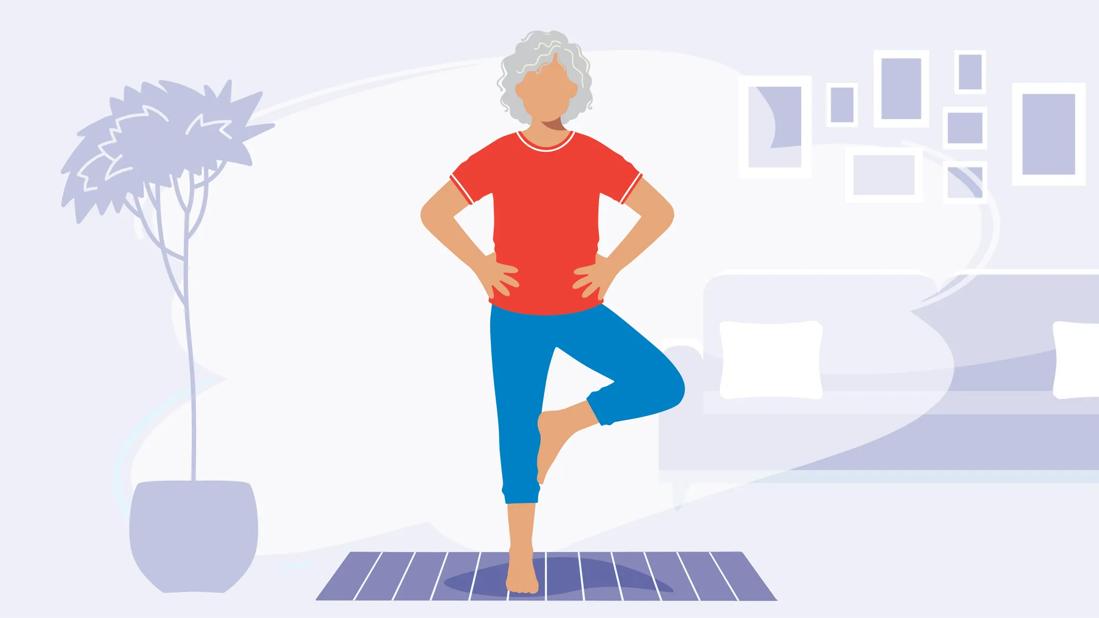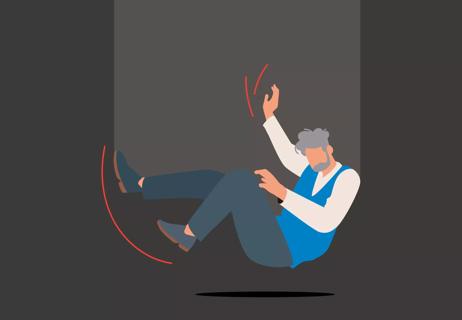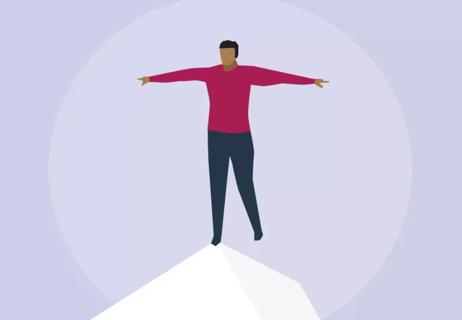A study found that you might live longer if you can stand on one leg — but it’s far from a perfect indication of longevity

The 10-second balance test is decades old, but it’s just now getting its 15 minutes (or 10 seconds) of fame. It’s trending because a study suggests this balance test could predict how long you might live.
Advertisement
Cleveland Clinic is a non-profit academic medical center. Advertising on our site helps support our mission. We do not endorse non-Cleveland Clinic products or services. Policy
If this bold claim feels alarming, don’t panic. It’s not really a magic test. And you can take steps to improve your balance test results.
Geriatric medicine clinical nurse specialist Anne Vanderbilt, CNS, explains what to know about the 10-second balance test and how to improve your balance.
The 10-second balance test, also called the single-leg stance test, requires you to stand on one foot for at least 10 seconds. Your supporting foot must stay planted in the same spot.
“It sounds easy, but many people are surprised at how challenging it can be,” Vanderbilt says.
Although this test is perhaps the best-known measurement of balance, it’s not a complete balance evaluation on its own.
A complete evaluation gauges your balance using a variety of tools. One of them is the four-stage balance test.
“This four-stage balance test gives your provider a clear picture of your balance ability,” Vanderbilt explains. “If you have a balance problem, we can look at what’s causing it and how to treat it.”
Before attempting the single-leg stance test, you should also be able to stand with:
Advertisement
If you can hold each pose for 10 seconds without support, then move on to the single-leg stance test (following safety precautions, like standing within reach of a stable surface for support).
There are different ways to perform the 10-second balance test, with your hands and feet in various positions.
“The placement of your hands and feet isn’t necessarily important,” Vanderbilt clarifies. “We just want to see whether you can balance on one foot without moving that foot or grabbing onto something.”
Some people will suggest, too, that you should try the test with closed eyes. But you don’t need to do this.
“When you close your eyes, you rely on your vestibular system,” she adds. “Vestibular health is important, but it’s unrelated to the study on longevity. And I wouldn’t attempt this test with your eyes closed unless you can easily pass it with your eyes open.”
Balance is a great skill and important for your well-being. But does it really predict life and death?
Maybe, says one recent study on the 10-second balance test.
“In the study, adults who couldn’t pass the 10-second balance test were 84% more likely to die within the next 10 years,” shares Vanderbilt. “The study also collected other data, such as age and health conditions.”
What’s the connection between balance and longevity? The study doesn’t tell us why the two are related, only that there’s a link.
Factors that may have affected the study results include:
In other words, it may not be that the test itself is predicting your lifespan. But rather that the 10-second balance test is an indication of your overall health and your risks.
If you tried the test and found yourself wobbling or grabbing your counter, there’s good news. You can take steps to improve your balance.
“Certain exercises can improve your balance,” Vanderbilt says. “But remember that balance isn’t a one-and-done goal you reach. You have to keep working on it throughout your life.”
Advertisement
Try these exercises to improve your balance:
You can also see a physical therapist who specializes in balance.
“Physical therapy is the most effective way to address balance problems,” she emphasizes. “Your therapist can give you safe, effective exercises based on your abilities, age and overall health.”
Balance is something that naturally declines with age. But you have the power to improve your balance — and probably your health along with it.
Advertisement
“It’s never too late to boost your balance,” Vanderbilt confirms. “The right exercises can make a major difference in people of all ages.”
Advertisement
Learn more about our editorial process.
Advertisement

Building lower body strength is key to staying upright, particularly as you age

Staying active and doing what you love may increase both your confidence and your balance

Is it clumsiness or something more serious?

Exploring mal de debarquement

Perfecting the squat before trying a lunge can start you off on the right foot

Staying active can help increase strength and flexibility, help maintain balance and coordination, and improve overall heart health

As the degenerative disease progresses, different mobility aids like a walker or wheelchair may be needed

Advocating for yourself and prioritizing self-care can smooth the ups and downs of life with FA

Babies can get congested easily, but you can calm their cough by keeping them hydrated, using nasal drops and running a humidifier

Weight loss may cause loose, sagging skin and muscle loss to your rear

Several conditions, like vitiligo and fungal infection, can cause a loss of pigmentation, leading to white spots or patches on your skin